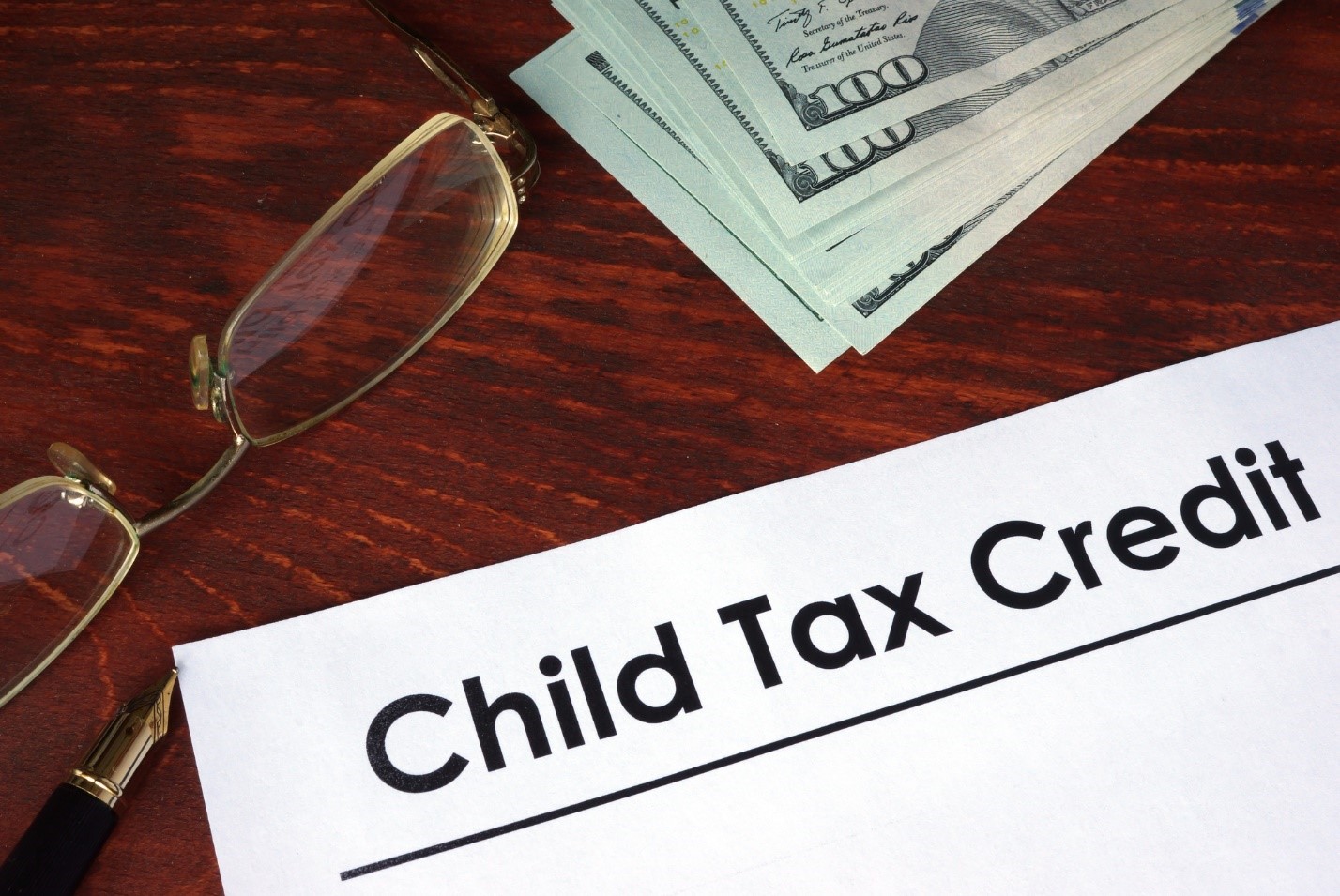This post was originally published on November 16, 2019, and extensively updated on December 7, 2022.
Many of our clients at CMP have families. We work with them every year to minimize their tax burden and ensure they take every credit and deduction they’re entitled to. Here’s what you need to know about the Child Tax Credit (CTC) from CMP, a Utah CPA company.

What is the Child Tax Credit?
The Child Tax Credit is an income tax credit that may be taken by eligible families with children under the age of 18. It is not available for children who are 18 or older at the end of the tax year, although there are other credits, such as the Credit for Other Dependents, which allow parents to claim a tax credit for children over 18 who are not eligible for the Child Tax Credit but are still claimed as dependents on the parent's tax return.
As part of the Taxpayer Relief Act of 1997, the Child Tax Credit originally allowed for 15 cents of credit for every thousand dollars earned over the first $3,000 of earnings and allowed a maximum credit of $500 per eligible child. The allowable credit amount has increased over time. Changes were made to accommodate the rising costs of living and the costs associated with older children who may not qualify for the tax credit as originally created.
Child age and family income are factors in determining eligibility for the Child Tax Credit. The credit is designed to help low-income families offset the expenses associated with raising children.
Advance Child Tax Credit Payments
During the COVID-19 pandemic, various tax breaks and stimulus payments were made available to taxpayers to help ease the financial burdens caused by the virus. One example was the Child Tax Credit advance payments included in the American Rescue Plan of 2021.
Under the plan, parents with qualifying children received up to 50% of the Child Tax Credit in the form of monthly advance payments. The amount of the annual credit for 2021 was calculated using the filer’s 2019 or 2020 tax return and divided into monthly payments, which were disbursed between July and December of 2021.
Anyone who received the advance child tax credit should have deducted the total amount of payments received when filing their tax return. Anyone who opted out of the advance credit can claim the entire tax credit amount according to their calculations. We’ll go into additional detail later in this article.
How Does the Child Tax Credit Work?
The Child Tax Credit is not as complicated as some other tax credits. The credit is calculated based on the number of children you have, their ages, and your income. You can then use the credit to get a dollar-for-dollar reduction of your tax liability.
For some families, this credit may be enough to move them into a lower effective tax bracket. Even if it doesn’t, it could mean that your family gets a larger tax refund than you would otherwise have received—or that you owe less to the government than you would have.
The Child Tax Credit is partially refundable. The credit is applied toward tax liability after the tax bracket has been determined. If you apply for the credit and don’t owe any taxes, the IRS will refund up to $1,500 per child.

Difference Between the Child Tax Credit and Dependent Care Tax Credit
Many tax credits have similar names, so it can sometimes be confusing for taxpayers to understand which credits they can take. One area that many of our clients ask about is the difference between the Child Tax Credit and the Dependent Care Tax Credit.
The Dependent Care Tax Credit is available to offset the expenses associated with caring for a child, such as daycare or in-home childcare. It is separate from the Child Tax Credit, which is designed to offset the everyday costs of raising a child, including expenses such as food, clothing, and healthcare.
Can You Get Both the Child Tax Credit and Dependent Care Credit?
A frequently asked question is whether people can claim both credits on their tax returns. Some families may be eligible for both credits. If you have children under 18 and meet the income thresholds in the next section, you can claim part or all of the Child Tax Credit. You may also qualify for the Dependent Care Tax Credit if both you and your spouse work outside the home or if one of you has a disability, is a full-time student, or is unemployed and looking for work.
How to Qualify for the Child Tax Credit
The qualifications for the Child Tax Credit are relatively simple. Any family with dependent children under the age of 18 may qualify.
Families with high income may not qualify for the credit because the amount of the credit reduces incrementally as income rises. However, the income levels are such that most working families will qualify for all or some of the tax credit. Here are the modified adjusted gross income thresholds for 2022:
- Income must be at or below $200,000 for single filers and married people filing separate returns.
- Income must be at or below $400,000 for married couples filing jointly and for qualified widows and widowers.
People with income below $75,000 for single filers and $150,000 for married filing jointly were eligible for an expanded credit in 2021, something that we’ll explore in the next section. Above these income thresholds, two phaseouts may reduce the amount of your Child Tax Credit. The first phaseout reduces the credit by $50 for each $1,000 (or fraction thereof) your income exceeds the above thresholds.
Child Tax Credit Changes & Current CTC Amount
The Child Tax Credit has undergone some changes since 2019. For both 2019 and 2020, the maximum credit was $2,000, with phase-out beginning at $200,000 income for single filers and $400,000 for married couples filing a joint return.
The American Rescue Plan temporarily increased the Child Tax Credit for 2021 to $3,600 for children under 6 and $3,000 for children under 18. However, to qualify for the increased credit, the income limit is $75,000 for single filers, $112,500 for the heads of household, and $150,000 for married couples filing jointly. As discussed above, it also included an option for eligible families to receive monthly advance payments.
For 2021, if your income exceeds $94,000 (single), $131,500 (head of household), or $169,000 (married filing jointly), your credit will drop from $3,000 per child to $2,000 per child. Households with income over $200,000 (single or head of household) or $400,000 (married filing jointly) are subject to a phaseout of the remaining credit, as explained above.
So, the big question you are likely wondering is: How much is the child tax credit for 2022?
The Child Tax Credit for 2022 has reverted to $2,000 per child.
How to Claim the Child Tax Credit
To get the Child Tax Credit, you must meet the following qualifications:
- You must claim the child as a dependent on your tax return.
- The child must be your biological child, an adopted child, or a foster child. You may also be able to claim a sibling, half-sibling, or other relative if you claim them as a dependent on your tax return.
- Your child must be a citizen of the United States, a US national (meaning they were born in American Samoa or the Marianas Islands), or a US resident alien.
- Your child must have lived with you for more than 6 months of the tax year.
- The child must not have earned more than half of their own support for the year.
You must also meet certain income requirements to receive the full tax credit. If you earn more than the income thresholds noted earlier, the credit amount will be reduced by $50 for each $1,000 above the limit that you earn. As noted above, you can claim the increased credit if you meet the lower income thresholds for 2021.
To qualify for Child Tax Credit and receive a refund for up to $1,500 per child, you must:
- Earn at least $2,500 within the tax year in question, and
- Have credits that exceed the amount of your tax liability; or
- Have three or more children and have paid Social Security taxes that exceeded your Earned Income Credit
You can claim the Child Tax Credit on Form 1040, Line 12a, or on Form 1040NR, Line 49.
How to Opt-Out of the Monthly Child Tax Credit Payments
The IRS began sending monthly payments to parents who qualify for the Child Tax Credit as part of the American Rescue Plan. While the monthly advances have undeniably been valuable to some parents, others opted out of receiving the payments in favor of taking full credit on their annual tax returns.
You may be wondering: Will child tax credit payments continue in 2022?
As of December 2021, the IRS has completed its disbursement of monthly Child Tax Credit advances with no plans to resume the payments. For that reason, there is no need to opt-out of payments. When the payments were still in effect, the Child Tax Credit Update Portal would have been the method you would use to opt-out, but the portal is no longer available.
If you have not yet filed your 2021 tax return and have received monthly payments toward your Child Tax Credit, it will directly reduce the amount of the credit you may claim when you file your tax return. If you’re someone who may owe taxes, it also can increase the amount you owe. If you aren’t sure how to account for the payments you receive, you want to work with a certified tax professional to ensure that your tax return is correct.
How to Add a Newborn to the Child Tax Credit
What happens if you have a newborn child? The short answer is that you’ll need to file documents with the IRS to add your newborn to your Child Tax Credit.
To add your baby to the credit, you’ll need to enter your baby as a dependent on your Form 1040. You’ll need to include their full name, date of birth, Social Security Number, and their relationship to you. You’ll also need to check the Child Tax Credit box next to their name.
You’ll be required to complete Schedule 8812 and attach it to your Form 1040. According to the IRS, you will need to attach additional information to prove your baby’s eligibility in some circumstances. You must provide a copy of your child’s Social Security card if the child was not born in the United States.
You may also be required to provide a birth certificate or adoption certificate, proof that the child was in the United States for part of the year, and proof that you are responsible for the child’s support. You can read Form 14815 for additional information and a complete list of the requirements.
Where’s My Child Tax Credit? How to Track
As noted above, the Child Tax Credit portal is no longer operational as of 2022. However, you still have several options to track the status of your income tax return—and refund if you expect one.
The first option is to visit the Where’s My Refund page on the IRS website. To get the status of your refund, you will need to have your Social Security Number, your tax filing status, and the exact amount of the refund you expect.
The second option is to download the IRS2Go app, which is free and available in the Google Play Store and Apple App Store. In addition to getting the status of your refund, you can also use the app to make tax payments and get free assistance with your tax return.
The third option is to call the IRS, which we do not recommend unless you are unable to use the website or app. Wait times may be very long during the tax filing season, making it the least efficient way to check on the status of your refund. If you decide that calling is the best option for you, the number is (800) 829-1040.
If you are not expecting a refund but want to check the status of your tax return, you can do so by logging in with an IRS account or with an ID.me account.
Do You Have to Pay Back the Child Tax Credit?
There are limited circumstances when you might have to repay some or all of your Child Tax Credit.
The most obvious example would be if you received advance CTC payments in 2021 and, after completing your tax return, you discover that you received a larger amount than you were eligible for. In that case, you would need to calculate the amount you should have received and subtract it from the payments you got. You may need to send money to the IRS to make up the difference.
However, if you are still due a refund after calculating the revised Child Tax Credit, you can simply receive a smaller refund (or no refund), with the IRS keeping an amount that will cover the overpayment of the Child Tax Credit. You can find additional information about how to calculate your Child Tax Credit factoring in monthly payments on the IRS website here.
Need Help Claiming the Child Tax Credit? CMP Has You Covered!
Families with one or more children under the age of 18 may be able to save money on their taxes by taking the Child Tax Credit. To find out if you qualify, you should review the eligibility requirements on Form 8812.
Do you need assistance filing your taxes or calculating your tax credits? CMP professional tax advisors can determine your eligibility and assure that you’re getting the best possible deal on your taxes.

















